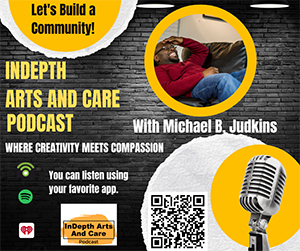A year ago, David Guerrero fell victim to an attack by his neighbor’s dog while he was walking down the road from the bus stop. He was rushed to the emergency department at St. Luke’s University Hospital in Bethlehem where he underwent surgery on his left hand and was treated for wounds on his right wrist and left calf.
“I didn’t know the circumstances of the injury to my left hand,” Guerrero said. “I thought I’d go in, get stitched up and leave.”
It turns out, the dog did severe damage to Guerrero’s left hand. He and his health care team say he has permanent disability. I’m a righty, thank God,” he said. For the past several months, Guerrero has been working with Scott Loev, DO, medical director for St. Luke’s Spine and Pain Associates, to manage his chronic pain.
Guerrero recently completed occupational therapy at Physical Therapy at St. Luke’s North location In Bethlehem. It was a huge milestone that has helped him regain movement and some function in his left hand.
“I worked with David extensively for about 10 months,” says occupational therapist Osmund Moyer, MOT, OTR/L. “I told him on day one that he would have a long road to recovery based on the extent of his injury and the amount of pain, stiffness and scarring he presented with. We used various types of massage techniques, splinting, and lots of exercising to help get his hand back to an adequate level of function. At first, he had difficulty making a fist and could barely move his ring and small finger. By the end of his care, he could make a full fist and carry between 15 and 20 pounds without discomfort. This was a milestone for him.”
However, pain set in, later identified by Dr. Loev as Complex Regional Pain Syndrome (CRPS).
“There are no specific tests to diagnose CRPS,” Loev said. “Diagnosis is made during a physical examination based on a list of common signs and symptoms such as color change, swelling, and nerve pain.”
CRPS can occur, Loev said, after a forceful trauma to an arm or leg, including a crushing injury or a fracture. Guerrero sustained both from the attack.
Since Guerrero started working with Dr. Loev earlier this year, he has received four sympathetic nerve blocks, called Stellate ganglion blocks. These injections consist of anesthetic medication and are administered to a collection of nerves called the stellate ganglion, Dr. Loev explained. This group of nerves is part of the fight-or-flight nervous system.
The blocks “can also help increase circulation and blood flow to your arm,” he said, noting other courses of treatment can include neuropathic medications, which target nerve pain.
Guerrero said the first shot “did nothing.” He was still experiencing pain, about a seven on a scale of 1 to 10. After the second shot several weeks later, he noticed improvement, and then even more improvement after his third and fourth shots.
The goal, he said, is to get to zero pain. He is currently between zero and one on the pain scale.
Guerrero, who works for Mack trucks, has been on disability since his attack. He understands he may not be able to return to the same line of work. Despite his incredible progress and improvement of his pain, he is still disabled in his hand. “It might be a big career change,” he said.
He credits his progress to his St. Luke’s team. “From the time I went to the ER, the whole St. Luke’s team has been nothing but the best.”
About St. Luke’s
Founded in 1872, St. Luke’s University Health Network (SLUHN) is a fully integrated, regional, non-profit network of more than 20,000 employees providing services at 15 campuses and 350+ outpatient sites. With annual net revenue of $3.4 billion, the Network’s service area includes 11 counties in two states: Lehigh, Northampton, Berks, Bucks, Carbon, Montgomery, Monroe, Schuylkill and Luzerne counties in Pennsylvania and Warren and Hunterdon counties in New Jersey. St. Luke’s hospitals operate the largest network of trauma centers in Pennsylvania, with the Bethlehem Campus being home to St. Luke’s Children’s Hospital.
Dedicated to advancing medical education, St. Luke’s is the preeminent teaching hospital in central-eastern Pennsylvania. In partnership with Temple University, the Network established the Lehigh Valley’s first and only four-year medical school campus. It also operates the nation’s oldest School of Nursing, established in 1884, and 52 fully accredited graduate medical educational programs with more than 500 residents and fellows. In 2022, St. Luke’s, a member of the Children’s Hospital Association, opened the Lehigh Valley’s first and only free-standing facility dedicated entirely to kids.
SLUHN is the only Lehigh Valley-based health care system to earn Medicare’s five-star ratings (the highest) for quality, efficiency and patient satisfaction. It is both a Leapfrog Group and Healthgrades Top Hospital and a Newsweek World’s Best Hospital. The Network’s flagship University Hospital has earned the 100 Top Major Teaching Hospital designation from Fortune/PINC AI 10 years in a row, including in 2023 when it was identified as THE #4 TEACHING HOSPITAL IN THE COUNTRY. In 2021, St. Luke’s was identified as one of the 15 Top Health Systems nationally. Utilizing the Epic electronic medical record (EMR) system for both inpatient and outpatient services, the Network is a multi-year recipient of the Most Wired award recognizing the breadth of the SLUHN’s information technology applications such as telehealth, online scheduling and online pricing information. The Network is also recognized as one of the state’s lowest-cost providers.
Information provided to TVL by:
Sam Kennedy
https://www.slhn.org/





